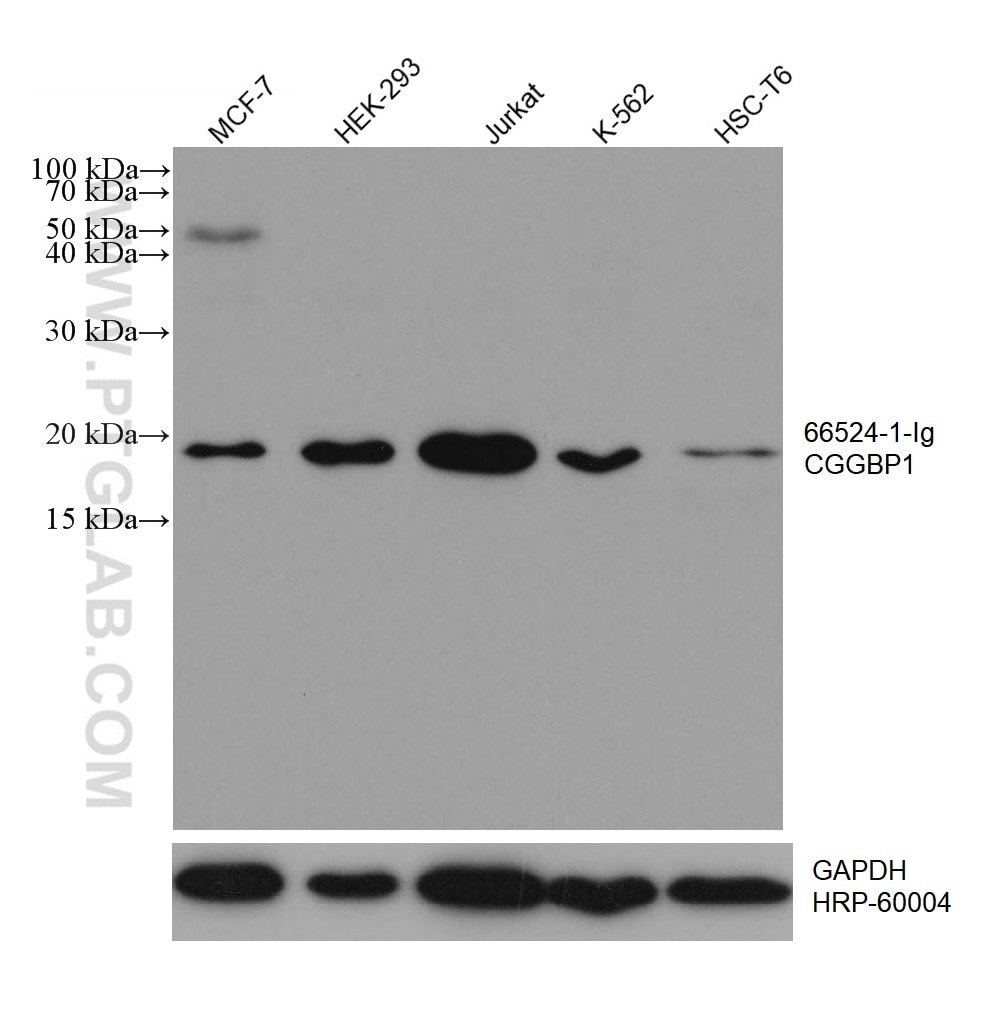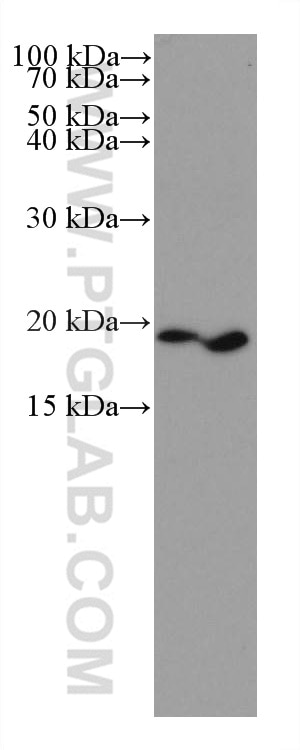Anticorps Monoclonal anti-CGGBP1
CGGBP1 Monoclonal Antibody for WB, ELISA
Hôte / Isotype
Mouse / IgG1
Réactivité testée
Humain, rat, souris
Applications
WB, ELISA
Conjugaison
Non conjugué
CloneNo.
2F5G9
N° de cat : 66524-1-Ig
Synonymes
Galerie de données de validation
Applications testées
| Résultats positifs en WB | cellules MCF-7, cellules HEK-293, cellules HSC-T6, cellules Jurkat, cellules K-562, cellules NIH/3T3 |
Dilution recommandée
| Application | Dilution |
|---|---|
| Western Blot (WB) | WB : 1:2000-1:10000 |
| It is recommended that this reagent should be titrated in each testing system to obtain optimal results. | |
| Sample-dependent, check data in validation data gallery | |
Informations sur le produit
66524-1-Ig cible CGGBP1 dans les applications de WB, ELISA et montre une réactivité avec des échantillons Humain, rat, souris
| Réactivité | Humain, rat, souris |
| Hôte / Isotype | Mouse / IgG1 |
| Clonalité | Monoclonal |
| Type | Anticorps |
| Immunogène | CGGBP1 Protéine recombinante Ag1129 |
| Nom complet | CGG triplet repeat binding protein 1 |
| Masse moléculaire calculée | 19 kDa |
| Poids moléculaire observé | 19 kDa |
| Numéro d’acquisition GenBank | BC005222 |
| Symbole du gène | CGGBP1 |
| Identification du gène (NCBI) | 8545 |
| Conjugaison | Non conjugué |
| Forme | Liquide |
| Méthode de purification | Purification par protéine G |
| Tampon de stockage | PBS with 0.02% sodium azide and 50% glycerol |
| Conditions de stockage | Stocker à -20°C. Stable pendant un an après l'expédition. L'aliquotage n'est pas nécessaire pour le stockage à -20oC Les 20ul contiennent 0,1% de BSA. |
Informations générales
CGGBP1, also named as CGGBP, is a 20 kDa CGG-binding protein. It binds to nonmethylated 5'-d(CGG)(n)-3' trinucleotide repeats in the FMR1 promoter. CGGBP1 may play a role in regulating FMR1 promoter. It is a bona fide midbody protein required for normal abscission and mitosis in general.(PMID:20832400)
Protocole
| Product Specific Protocols | |
|---|---|
| WB protocol for CGGBP1 antibody 66524-1-Ig | Download protocol |
| Standard Protocols | |
|---|---|
| Click here to view our Standard Protocols |



